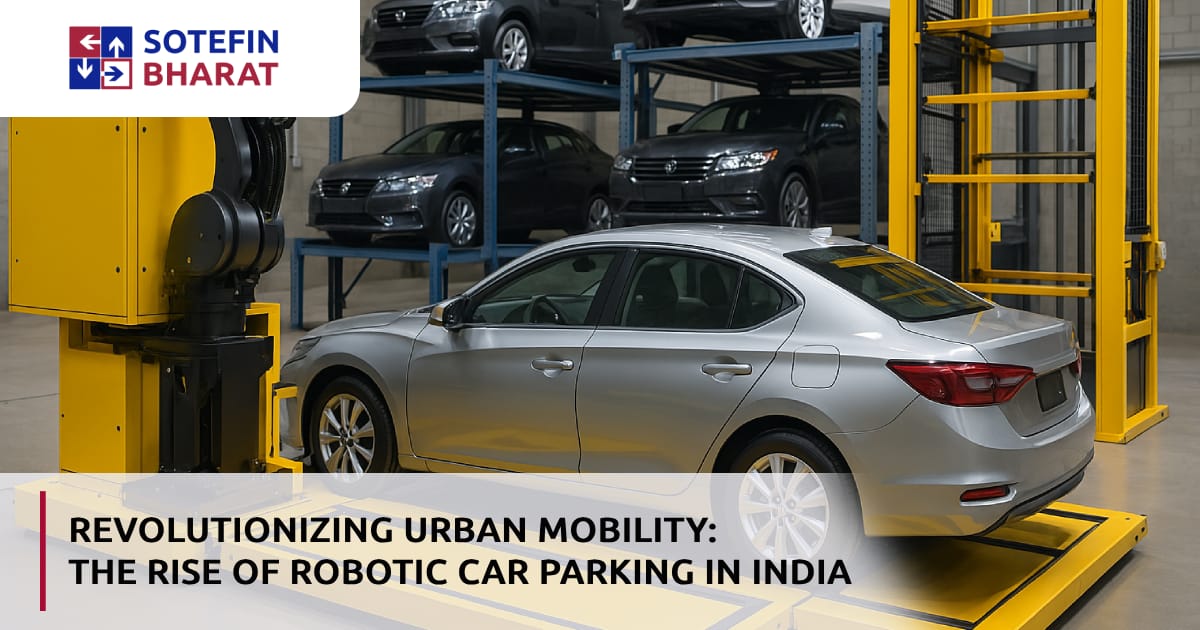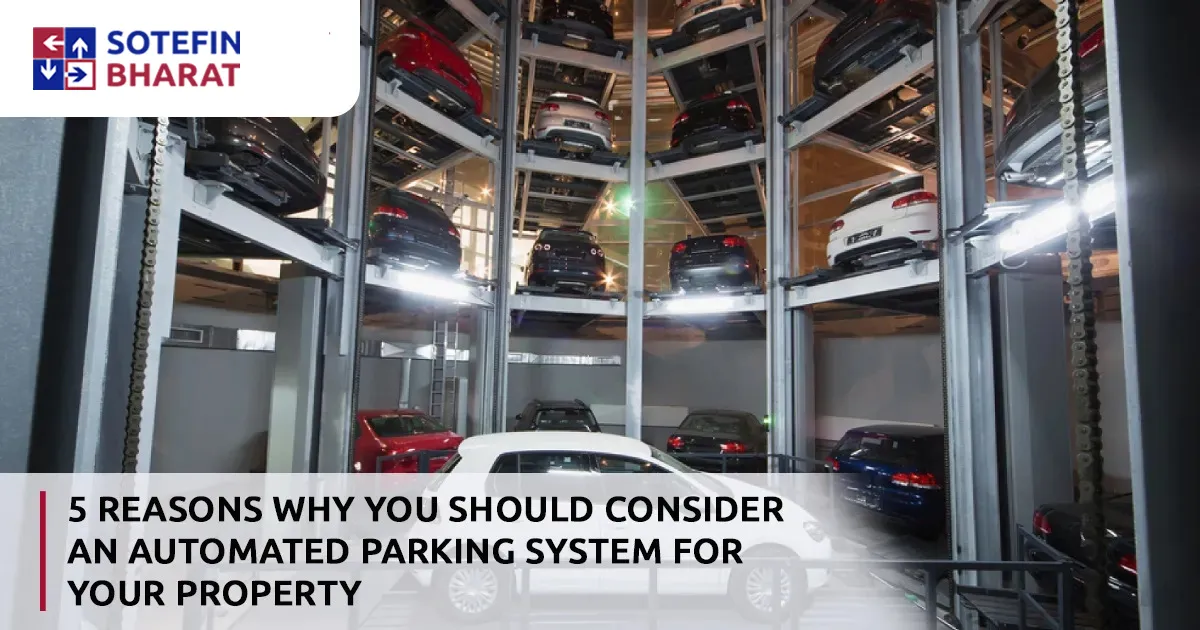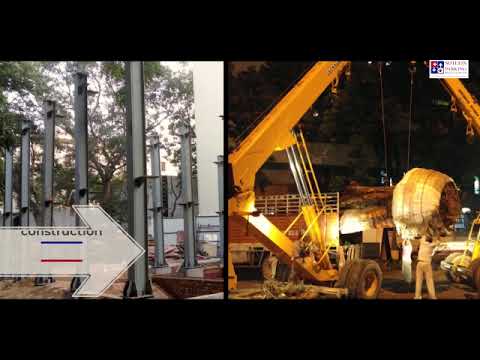
As India’s cities swell with population and vehicles, urban planners face a daunting challenge: how to accommodate the country’s 300 million registered vehicles (and counting) in spaces that were never designed for such density. Traditional parking systems—marked by sprawling lots, chaotic street parking, and inefficient use of vertical space—are buckling under pressure. Enter robotic car parking systems (RCPS), a cutting-edge solution blending automation, artificial intelligence, and space optimization. In the Indian context, this technology isn’t just a luxury—it’s a necessity.
What is Robotic Car Parking?
Robotic car parking systems automate vehicle storage and retrieval using a combination of mechanical platforms, sensors, and software. Drivers leave their cars in an entry bay, and automated guided vehicles (AGVs) or robotic shuttles transport them to pre-assigned slots, often stacked vertically or horizontally in multi-tiered structures. The process eliminates the need for human-driven parking, ramps, and winding pathways, maximizing space while minimizing time and energy.
Key Features of Robotic Parking Systems
1. Space Efficiency:
In cities like Mumbai and Delhi, where land costs exceed ₹1 lakh per square foot in prime areas, space is gold. Traditional parking requires 25–35 sq.m per car (including ramps and circulation space). Robotic systems slash this to just 10–15 sq.m by stacking cars vertically and eliminating ramps. For instance, a 100-car robotic facility occupies 30% less space than conventional parking, freeing up room for green spaces or commercial use.
2. Speed and Convenience:
Retrieving a car takes 2–3 minutes via a RFID Tags or Face ID with touchscreen interface—a boon in time-crunched cities. Systems like palletless designs (where cars are lifted directly by robotic arms) reduce mechanical complexity, ensuring reliability even during peak hours.
3. Enhanced Security:
With restricted human access, risks of theft, scratches, or dents plummet. Surveillance cameras and biometric authentication add layers of security; a critical feature in India, where vehicle vandalism and theft are recurring concerns.
4. Eco-Friendly Design:
Reduced idling and circling for parking spots lower fuel consumption and emissions. A study by the Indian Institute of Technology (IIT) Delhi found that 30% of urban traffic congestion stems from drivers searching for parking. Robotic systems could cut CO₂ emissions by up to 40% in high-density zones.
5. Scalability and Modularity:
Systems can expand vertically or horizontally as demand grows. For mixed-use developments in cities like Bengaluru or Hyderabad, modular designs allow seamless integration with malls, offices, and apartments.
6. Disability-Friendly Access:
Automated systems eliminate the need for staircases or long walks—a win for elderly drivers and people with disabilities.
The Indian Context: Opportunities and Challenges
Opportunities
1. Smart Cities Mission:
Under India’s Smart Cities Mission, 100 cities are upgrading infrastructure, with Pune, Chennai, and Ahmedabad prioritizing smart parking. Robotic systems align with goals of reducing congestion and pollution.
2. Real Estate Boom:
High-rise residential and commercial projects are ideal candidates for automated parking.
3. Government Incentives:
States like Maharashtra and Karnataka offer tax rebates for green buildings, which could extend to RCPS installations.
Challenges
1. Power Dependence:
Unreliable electricity in smaller cities necessitates backup solutions like solar panels or battery storage.
2. Cultural Hesitation:
Many Indians distrust automated systems. Pilot projects, like Delhi’s Nehru Place automated parking (which faced initial resistance), highlight the need for public awareness campaigns.
3. Maintenance Expertise:
A shortage of skilled technicians for advanced robotics could delay repairs. Partnerships with global RCPS manufacturers (e.g.,Sotefin Bharat, Klaus Multiparking, Unitronics) may bridge this gap.
Case Study: Mumbai’s First Robotic Parking Lot
In 2023, a 12-story robotic parking tower opened in Lower Parel, Mumbai’s commercial hub. With a capacity for 200 cars, it serves a bustling office complex:
- Space Saved: 50% reduction in land use compared to traditional parking.
- User Adoption: 75% of users reported faster retrieval times during monsoons, when manual parking becomes chaotic.
- Challenges: Initial glitches in payment gateways and occasional sensor errors underscored the need for robust IT integration.
The Road Ahead
For India, robotic parking isn’t about luxury—it’s about survival. As urban populations balloon to 600 million by 2030, cities must adopt scalable solutions. Key steps include:
- Policy Support: Mandating RCPS in new high-rises and offering subsidies.
- Public-Private Partnerships (PPPs): Collaborating with firms like Bosch or Tata Projects to drive innovation.
- Awareness Campaigns: Demonstrating reliability through pilot projects in metro cities.
Sotefin Bharat: Smart parking solutions utilizing robotic and automated systems
Addressing the challenges of parking in India’s busy cities, Sotefin provides state-of-the-art robotic and automated car parking systems. These intelligent solutions employ advanced automation and robotics to ensure effortless parking and retrieval, leading to significant space savings. This maximized space utilization not only reduces the demand for extensive parking structures but also minimizes the need for parking personnel, making them a valuable asset for India’s urban landscape.
Conclusion
Robotic car parking systems represent a paradigm shift in India’s urban mobility narrative. While challenges like cost and cultural adaptation persist, the technology’s potential to decongest cities, reduce pollution, and optimize space is undeniable. As the saying goes, “The best time to plant a tree was 20 years ago; the second-best time is now.” For India’s parking crisis, the time to embrace robotics is today.









